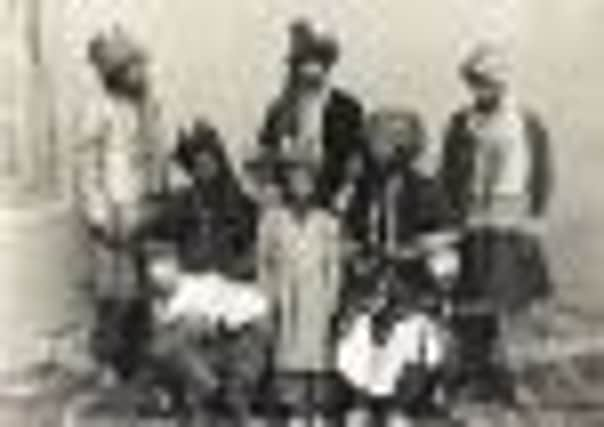British Raj revisited through lens of Scottish photographer


A collection of rarely seen photographs taken by a Scot, which offer an unparalleled record of life under the British Raj, has gone on display at the Scottish National Portrait Gallery (SNPG).
Lucknow to Lahore, which opens today, charts a four decade-long quest by Aberdeenshire-born photographer Fred Bremner to document ordinary life in and around India when the nation was under British rule.
Advertisement
Hide AdAdvertisement
Hide AdThe exhibition, described as an “extraordinary insight” into Indian history, features images of towns and cities undergoing seismic change, as well as pictures of colonial officers and members of the native aristocracy.


Comprising two dozen images printed by renowned photographer Pradip Malde from the original glass negatives, the gallery has chosen the exhibition to open its season of photography over the coming months, hailing Bremner’s “rich, personal perspective of the people and places” he encountered during his travels.
Sheila Asante, migration
stories curator at the SNPG, believes his work “both reveals how British India was imagined and reflects the complex attitudes of its rulers”.
She said: “This is a fantastic opportunity to catch a glimpse of rarely seen images of the Indian Empire.
“Fred Bremner was one of the first photographers to capture the very north-western edge of the British Raj.
“An accomplished photographer, he had an eye for dynamic compositions.
“His intimate exhibition of his work offers an extraordinary insight into how one Scot viewed that far-off land known as the Indian Empire.”
Advertisement
Hide AdAdvertisement
Hide AdBorn in 1863, in the Aberdeenshire village of Aberchirder, six miles west of Turriff, Bremner’s journey to India was an unlikely one.
One of six children in a poor family, he left school at the age of 13 to begin his career in his father’s photographic studio in Banff. He worked there for six years before an offer came his way from GW Lawrie, his brother-in-law, and a photographer of some repute who was making a living in Lucknow, northern India, which would later become the capital of Uttar Pradesh.
The teenager borrowed £20 from his father, and set off in late 1882 on a steamship to begin his new life.
With a basic studio and equipment, Bremner took to his assignments with relish, travelling to places such as Cawnpore, Allahabad, and Ferozepur, where he documented the daily work of British regiments such as the 60th Rifles.
He also ventured to remote rural areas seldom seen before, making a journey on a hill pony into the Himalayas, for example, where he stayed with Scottish plantation owners and photographed tribes.
Treacherous though some of his expeditions were, they proved not without their pleasures. On one trip through the Bolan Pass, for example, he found the food “agreeable”.
Writing in My Forty Years in India, a journal of his time in the region which was published in 1940, he recalled the “healthy” sheep grazing in Baluchistan: “The mutton is famed for its fine quality,” he noted. “Honestly, I have never tasted better anywhere, not even in Scotland.”
Advertisement
Hide AdAdvertisement
Hide AdBy 1889, Bremner had saved enough money to set up his own studio in Karachi, purchasing the equipment from a firm in Glasgow. It would, though, not be his base. The Scot’s thirst for discovery saw him continue to travel far and wide, and he went on to set up premises in Quetta in Baluchistan, Lahore, and Rawalpindi in the Punjab.
Some of the prominent and distinguished sitters he photographed during his halycon portraiture years included the Prince of Wales – later King Edward VIII – during his tour of India in 1922, and Indian nobility such as the Maharajah of Jind.
However, Bremner’s images also reveal a fascination with homespun customs and crafts.
His large glass plate negatives captured memorable scenes of fishermen on the Indus and a dramatic 1896 crossing of the Jhelum in Kashmir – where a single cowhide rope served as the bridge – as well as snapshots of woodcarvers and carpetmakers.
“It is a curious way of engineering these people have,” Bremner wrote of the latter picture.
• Lucknow to Lahore: Fred Bremner’s Vision of India is being shown at the SNPG until
7 April. Admission is free.